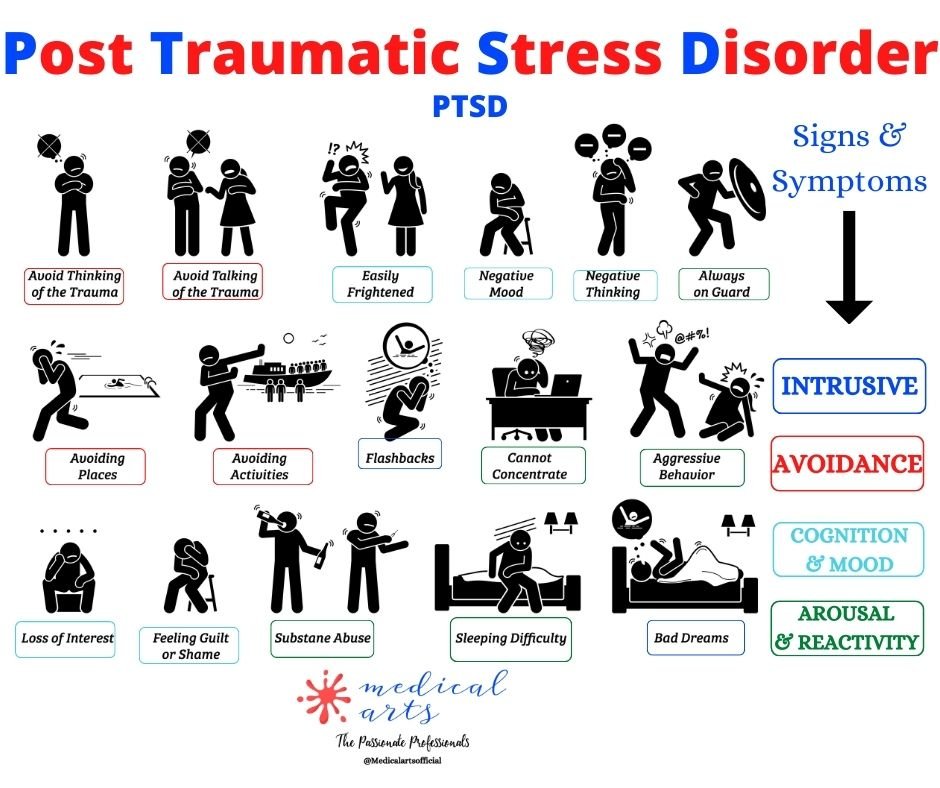What is PTSD?
PTSD is A mental health condition where typical symptoms develop following exposure to one or more traumatic events.
A traumatic event such as drowning can lead to a compromised sense of safety. It is natural to feel scared, anxious, and hesitant to try swimming the following day, or weeks. The person may have nightmares, and difficulty stopping thinking about what happened, These symptoms are temporary, and they slowly wear off.
In PTSD, the upset does not fade after an adverse experience, the symptoms do not decrease, and the person does not feel better with time but may worsen, By having intrusive thoughts, nightmares, and flashbacks of the adverse event and becoming hypervigilant in addition to suffering from sleep disturbance.
What is the prevalence of PTSD/Post traumatic stress disorder?
The lifetime prevalence of PTSD is estimated at 9 percent in the general adult population based on a survey in Canada.
In 63% of women with PTSD, a sexual assault was found to be the cause. For men, wars and combative experiences were the primary triggering event.
In post-traumatic stress disorder (PTSD), the symptoms vary from one person to another, and we recognize four groups.
What are the signs and symptoms of Post-traumatic Stress Disorder/PTSD?
ONE, intrusive symptoms, such as recurrent nightmares, and flashbacks about the event.
TWO, avoidance symptoms as trying to avoid the event's memories, and avoiding reminders such as places or people related to the incident.
THREE, Altered mood and thinking, an example, inability to remember a vital aspect of the event, exaggerated negative beliefs, or feeling of detachment from others.
FOUR, Arousal and reactivity, like angry outbursts, recklessness, hypervigilance, and sleep disturbance.
PTSD can happen at any age. Symptoms usually begin within the first three months after the trauma. Delayed PTSD is not rare and may happen years after the initial incident.
How to diagnose PTSD, what are the criteria? (DSM-5)
to qualify for a diagnosis of PTSD, The patient Experiences the following for more than one month:
one or more intrusion symptoms.
one or more avoidance symptoms.
two or more symptoms that affect mood and thinking.
and finally, two or more arousal and reactivity symptoms.
Click on the image below to get your instant copy of DSM-5-TR PDF 2023
What are the causes and risk factors of PTSD/post traumatic stress disorder?
Some factors may increase the odds of developing PTSD, and here are some of them:
Genetics, Inherited mental health problems such as a family history of anxiety disorders and depression.
Having experienced other trauma earlier in life, such as childhood abuse
Lacking a solid support system of close family and friends.
Biological changes, CT-scan of the brain show that the hippocampus appears different in people with PTSD than others. The hippocampus is involved in processing emotions and memories.
How to treat PTSD?
Duration of the PTSD symptoms varies. In about one-half of the cases, the disorder disappears within three to six months.
However, a rapid engagement of treatment increases the chances of recovery and a shorter period of suffering.
Psychotherapy is proven effective by using cognitive behavioral therapy to challenge dysfunctional beliefs and better control negative emotions.
Exposure therapy is a potentially effective way to Reconnect and integrate with reality.
The most commonly used drugs to treat PTSD are:
SSRI, and SNRI, are two groups of antidepressants that regulate neurotransmitters in the brain that affects our mood, alertness, and energy. It may take 4 to 8 weeks to start seeing the effect of such medicines.
Tricyclic antidepressants are another group of medications that are used to treat PTSD. Other medications are also used to increase the efficiency of the treatment, such as Seroquel and lamotrigine.
Get your instant ebook: "PTSD - EMDR Toolbox: Theory and Treatment of Complex PTSD and Dissociation"
PTSD - Post-Traumatic Stress Disorder - Definition, Symptoms, epidemiology, causes, treatment. DSM-5.



